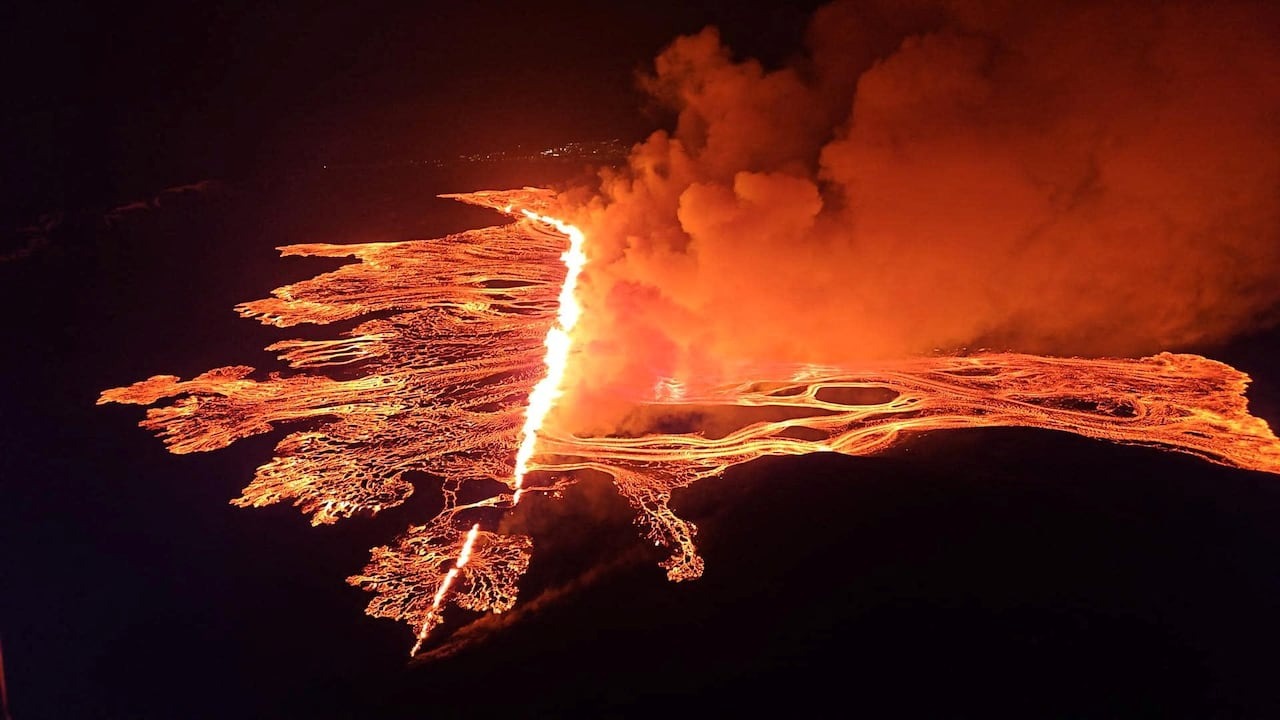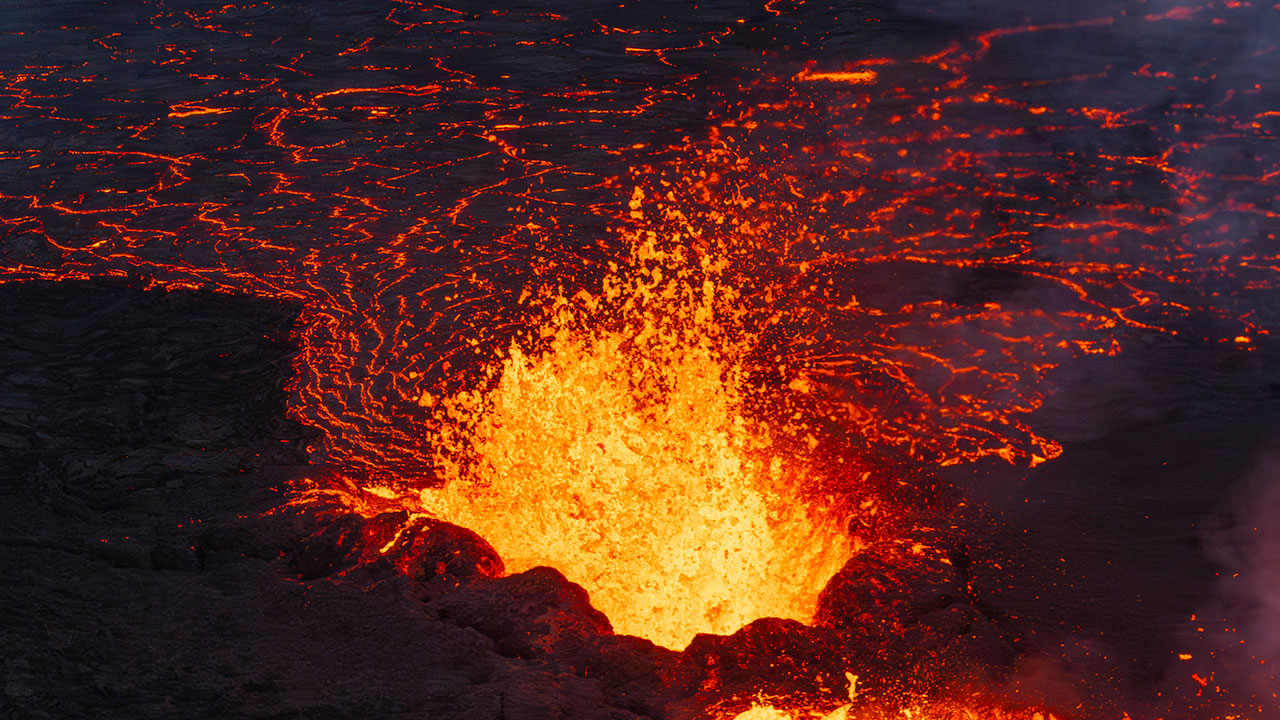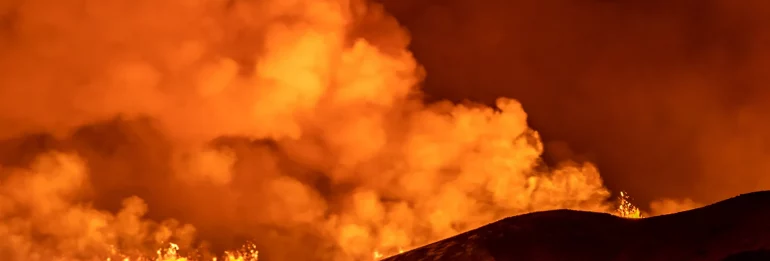The harsh beauty of Iceland reminds itself again when one of its volcanoes, which has not subsided since December, throws out fountains of hot lava for the sixth time. This continuous flow of natural energy transforms the island's landscape into a picturesque yet frightening spectacle, demonstrating the power and unpredictability of our planet. With each subsequent eruption, the volcano continues to shape and transform its environment, attracting the attention of scientists and tourists from all over the world.
Sixth eruption in southwest Iceland: 2.42-mile fissure and colorful lava show
Danish meteorologists reported a new volcanic eruption in southwest Iceland on Thursday, with hot lava and dense clouds of smoke once again rocking the region, the sixth such event since December. The crack reached a total length of about 2.42 miles and expanded nearly a mile in just 40 minutes, according to a released statement from the USS Icelandic Meteorological Service, which tracks volcanic activity.
Live broadcasts from the Reykjanes Peninsula showed hot lava bursting out of the ground, lighting up the dark night sky with its brilliant shades of yellow and orange, creating a mesmerizing contrast.
“The impact is limited to a local area around the area of volcanic activity and is not life-threatening as the surrounding areas have been evacuated,” the Icelandic Foreign Ministry said in a statement on Platform X.
The Meteorological Office said the lava flow was not heading towards the nearby fishing village of Grindavik, where nearly 4,000 people were evacuated in November.

The eruption occurred in the Sundhnukar range of craters located to the east of Mount Silingafell, partly covering areas where recent eruptions have occurred on the Reykjanes Peninsula.
This volcanic structure, which does not have a central crater, manifests its activity by creating huge cracks in the earth's crust.
Research has revealed a buildup of magma beneath the earth's surface, prompting warnings of possible new volcanic activity in the area south of the Icelandic capital of Reykjavik.
Fresh volcanic activity on the Reykjanes Peninsula, Home to about 30,000 people, almost 8% of Iceland's total population, ended on June 22 after 24 days of hot lava shooting into the air.
Iceland, with a population of about 400,000, faces a major challenge. Researchers warn of the potential threat of repeated volcanic outbreaks on the Reykjanes Peninsula in the future, with repeated volcanic activity over the course of decades or even centuries. The peninsula has experienced nine eruptions since 2021, signaling the rebirth of geological systems that had been dormant for eight centuries.
In response to this threat, authorities initiated the construction of artificial barriers to direct lava flows away from key infrastructure such as the Svartsengi power station, the famous Blue Lagoon spa and the town of Grindavik.
Reykjavik Keflavik Airport said on its website that regular flights were continuing without changes. However, the nearby luxury geothermal spa and Blue Lagoon Hotel suspended their operations and evacuated all guests due to the recent eruption.
Volcanic activity on the Reykjanes Peninsula is characterized by fissure eruptions, which generally do not impede air traffic. These eruptions are not accompanied by large explosions or significant release of ash into the upper atmosphere and do not have a serious impact on airspace.
Iceland, comparable in size to the US state of Kentucky, has more than 30 active volcanoes. This turns the northern European island into a unique place for studying volcanic activity for fans of volcanological tourism - a unique destination that attracts thrill seekers and lovers of natural phenomena.
The Hazards of Volcanic Eruptions: How to Deal with Lava, Ash and Environmental Consequences
Volcanic eruptions represent one of the most powerful and destructive natural disasters. Volcanic activity can come in many forms, from lava and ash flows to sudden explosions and volcanic clouds. These phenomena can cause significant damage both directly to the environment and to human life.
The main danger associated with a volcanic eruption is the release of hot lava. Lava can flow over significant distances, destroying everything in its path: from vegetation to buildings and infrastructure. Its high temperature makes it extremely dangerous, and even a slow moving lava flow can pose a deadly threat.
Volcanic clouds, made up of small particles of ash, gas and volcanic rocks, also pose serious risks. These clouds can cover large areas, disrupting normal life and work. When ash settles on the ground, it can contaminate water sources, destroy farmland and cause breathing problems for people and animals.
In addition, sudden explosions can result in the formation of ash clouds that rise into the stratosphere and can affect climate conditions well away from the epicenter. This could cause temporary changes in the weather, such as lower temperatures and less sunlight, which could in turn impact agriculture and ecosystems.

It is also worth considering the danger of mudflows and landslides, which can be triggered by volcanic sediments. These events can flood areas, destroy roads and buildings, and pose a threat to the public.
In response to these threats, it is important to be prepared for emergency evacuations and to follow warnings and recommendations from local authorities. Modern methods of monitoring volcanic activity help predict eruptions, but the inevitability of complete protection remains in question. Preparation and awareness are key to minimizing the effects of volcanic eruptions and protecting life and property.

